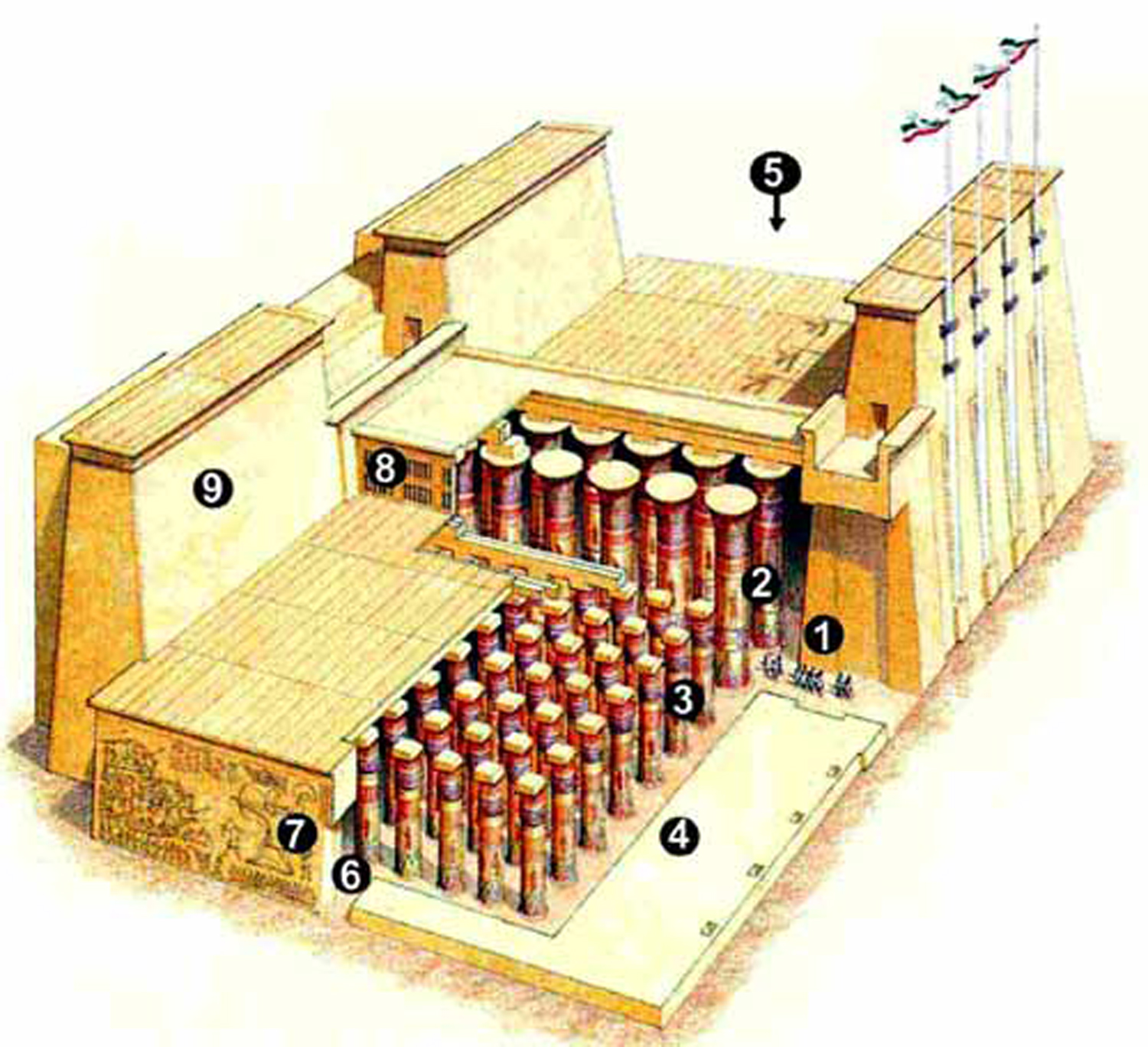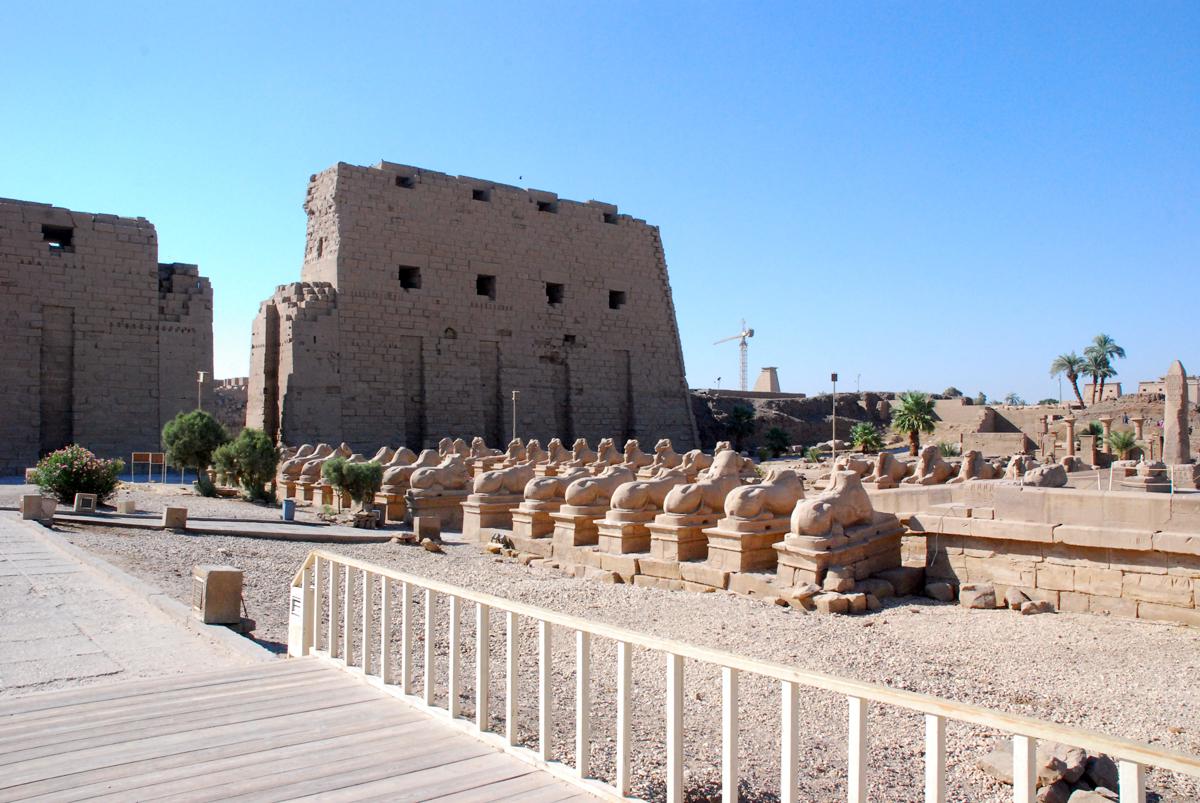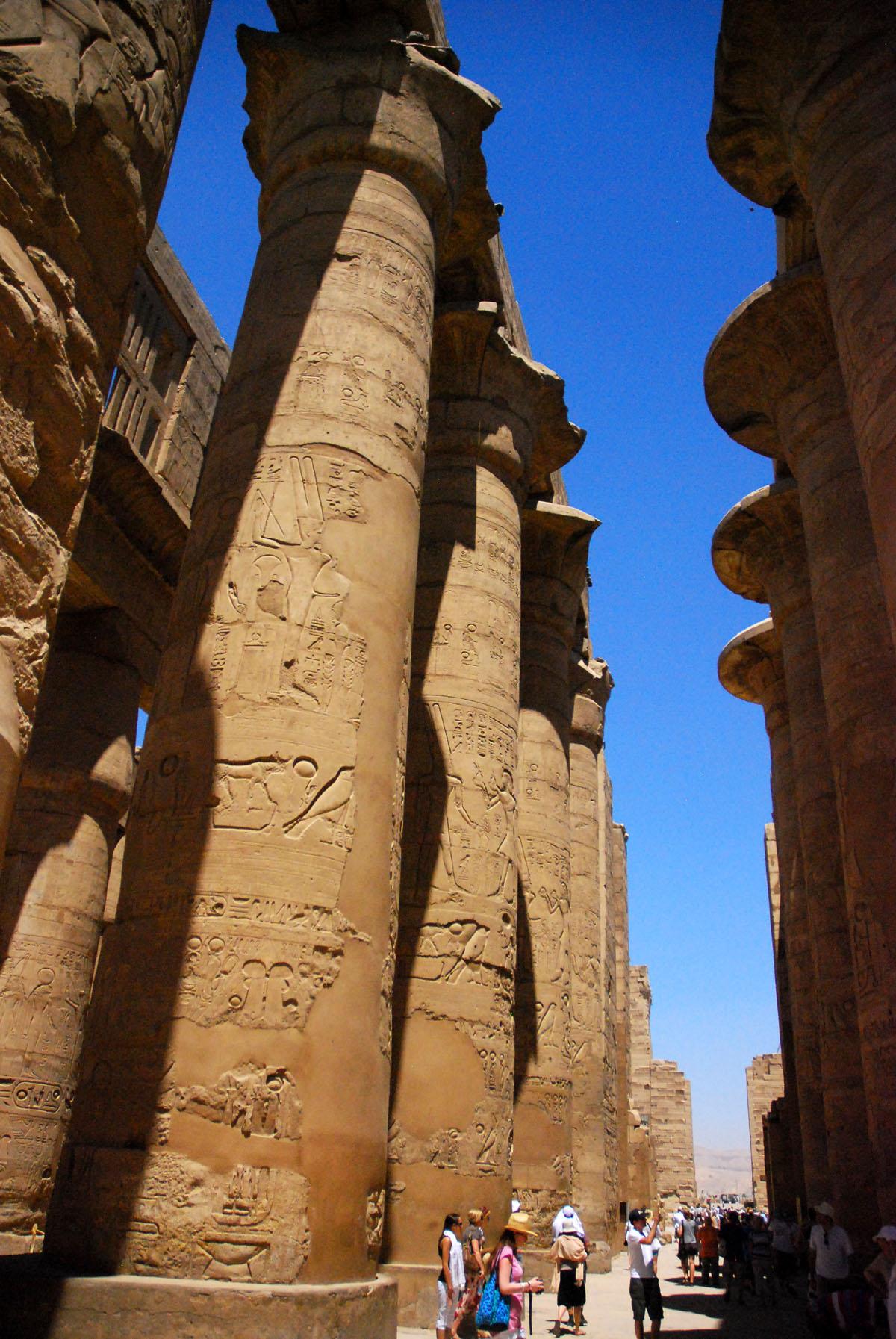A Historical Tour of the Hypostyle Hall
|
Touring the Hypostyle HallMost visitors to the temple of Amun-Re at Karnak will enter from the west, passing along the avenue of ram-headed sphinxes and between the two massive towers flanking a great gateway. Serving as Karnak Temple's formal entrance and being the outermost of a series of double-towered gates called pylons, this impressive structure is known today as the First Pylon.
Beyond this portal, as visitors look straight across a large courtyard filled with smaller monuments, they will see another, more ruined edifice, which is the Second Pylon.
Behind it, however, instead of another court, twin rows of giant columns crowned by open papyrus-bloom capitals suddenly appear beyond the doorway: the central nave of the Great Hypostyle Hall.
Even amid the labyrinthine grandeur of the rest of Karnak, countless visitors never fail to be astonished by this vast forest of giant columns. Hundreds of tourists, following their guides or milling about on their own, cannot help but crane their necks and look up to the dizzying heights of the column capitals, walls, and the mammoth window grilles and architraves of the clerestory roof. So gargantuan are these thickets of columns— and so overwhelming their endless successions of kings, gods and myriads of hieroglyphs— that tourists often wander about wholly befuddled, unable to take any of it in. Yet despite their bewilderment, they will always remember the forest of columns, second only to the Great Pyramids, as the most stupendous monument in the land of the Pharaohs. |





